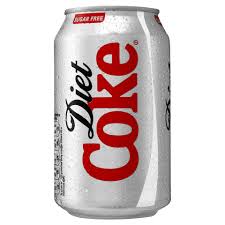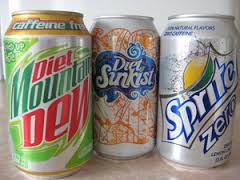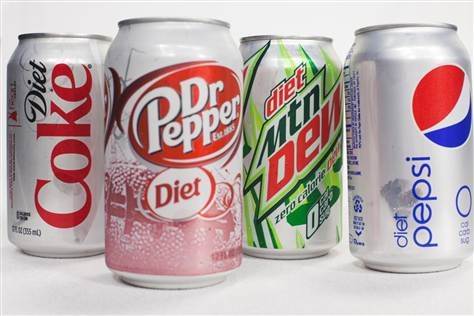Truth about Sweetners
Contrary to popular belief, numerous recent studies have found that artificial sweeteners (found in diet coke for example) such as aspartame can:
– Stimulate your appetite
– Increase carbohydrate cravings
– Stimulate fat storage and weight gain
Artificial sweeteners like sucralose, aspartame and sucralose also tend to do the opposite of what they are marketed as doing. Several studies have linked consumption of diet sodas, which are loaded with synthetic sweetening chemicals, to cause weight gain rather than weight loss, which may come as a surprise to many people.
When taken at face value, diet soda seems like a health-conscious choice. It saves you the 140-plus calories you’d find in a sugary soft drink while still satisfying your urge for something sweet with artificial sweeteners like aspartame, saccharin, and sucralose. But there’s more to this chemical cocktail than meets the eye.
A study, published in the January 2013 issue of the journal Appetite, was done by a Brazilian research team with the Faculty of Medicine of the Federal University do Rio Grande do Sul. Rats were fed plain yogurt sweetened with either aspartame, saccharin, or sugar, plus their regular rat chow, for 12 weeks. “Results showed that addition of either saccharin or aspartame to yogurt resulted in increased weight gain compared to addition of sucrose (sugar), however total caloric intake was similar among groups,” the researchers write.
Artificial sweeteners have more intense flavour than real sugar, this means over time products like diet coke dull our senses to naturally sweet foods like fruit, says Brooke Alpert, RD, author of The Sugar Detox. Even more troubling, these sugar stand-ins have been shown to have the same effect on your body as sugar. “Artificial sweeteners trigger insulin, which sends your body into fat storage mode and leads to weight gain,” Brooke says. essentially it confuses your body.
Diet coke and other diet drinks are calorie-free, however this won’t necessarily help you lose weight. Researchers from the University of Texas found that over the course of about 10 years, diet soda drinkers had a 70% greater increase in waist circumference compared with non-drinkers. And get this: participants who wolfed down two or more soda drinks a day experienced a massive 500% greater increase. The way artificial sweeteners confuse the body may play a part, but another reason might be psychological, says Minnesota-based dietitian Cassie Bjork. When you know you’re not consuming any liquid calories, it might be easier to justify to yourself to munch down a double cheeseburger or extra slice of pizza.
Drinking one diet soda a day was associated with a 36% increased risk of metabolic syndrome and diabetes in a University of Minnesota study.
When you drink diet soda, you’re not taking in any calories—but you’re also not taking anything in that does your body any good, either. The best no-calorie drink is just plain water, which is essential for many of our bodily processes, so replacing it with diet soda is a negative thing.
Early studies on aspartame and anecdotal evidence suggests that this artificial sweetener may trigger headaches in some people.
According to a case study published in the journal General Dentistry. The research compared the mouths of a cocaine-user, a methamphetamine-user, and a habitual diet-soda drinker, and found the same level of tooth erosion in each of them. The culprit here is citric acid, which weakens and destroys tooth enamel over time.
Another recent study presented at a the American Academy of Neurology meeting found that over the course of a decade, people who drank more than four cans of soda a day were 30% more likely to develop depression than those who steered clear of sugary drinks. The correlation held true for both regular and diet drinks, but researchers were sure to note that the risk appeared to be greater for those who primarily drank diet sodas and fruit punches. Although this type of study can’t prove cause and effect, its findings are worth considering.

Don’t be fooled by advertising. These underweight, starving girls probably don’t touch Diet Coke.
Women over 60 are already at a greater risk for osteoporosis than men, and Tufts University researchers found that drinking soda, including diet soda, compounds the issue. Female soda drinkers had nearly 4% lower bone mineral density in their hips than women who didn’t drink soda.
In 2006, a study published in the American Journal of Clinical Nutrition found that soda intake (all kinds, not just diet) was associated with low bone-mineral density in women.
Only one diet soft drink a day could boost your risk of having a vascular event such as stroke, heart attack, or vascular death, according to the researchers from the University of Miami and Columbia University. Their study found that diet soda devotees were 43% more likely to have experienced a vascular event than those who drank none.





